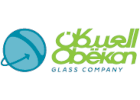INFO
This is the basic company information. The company provides additional detailed information, such as website, fax and telephone numbers, contact persons, history and company data.
To get access to this information or for printout of the company profile, you need to have a valid "Profile Access" to glassglobal.com. Information for booking are available at Price Info .
Contact
| Indirizzo | Tuart Glassware Ltd. Yavuz Selim Mh. Akdeniz Cd. No:28 K:2, Cavusbasi Beykoz 34830 Istanbul PoBox 34830 |
| Nazione | Turchia |
| Get in contact with Tuart Glassware Ltd. |
Prodotti o Macchinari
GLASSWARE PRODUCTS -PLATES, BOWLS , AMENITIES , GLASSES AND CUPS , DECORATIVE ITEMS
Through a variety of techniques and processes, we blend texture, contrast and the unexpected to offer a series of different styles.
GLASS FUSION
The origin of fused glass date back to around 2000 B.C. By 1500 B.C. it had been developed into a fine art by the Egyptians and Romans and with the advance of glass blowing (about 500 AD) it became a lost art till Art Nouveau Period (1880-1920) as Pete de Verre (the fusing crushed glass in a mold).
The glass is fused by melting pieces of glass together and then shaping them. A variety of moulds are used into which the glass ingredients are mixed well and melted together in a furnace which requires a temperature as high as around 800 degrees celcius.
GLASS BLOWING
The art of glass blowing was first discovered in the Middle East along the Phoenician coast. Prior to this, glass has been a very expensive luxury, but the invention of the blow-pipe caused what might almost be terms of an industrial revolution with the result that from an expensive luxury, glass became relatively cheap.
The method of blowing is that the glass-blower makes a "gather" by dipping the knob shaped end in a pot of molten glass. After blowing down the tube the gather is blown into a hollow bulp. By swinging and rotating the hot bulb of glass and by manipulating it with a few simple tools any shape can be created.
This method of glass blowing is still in use today for making of vases and art objects, basically the same way as it was originally done.




















